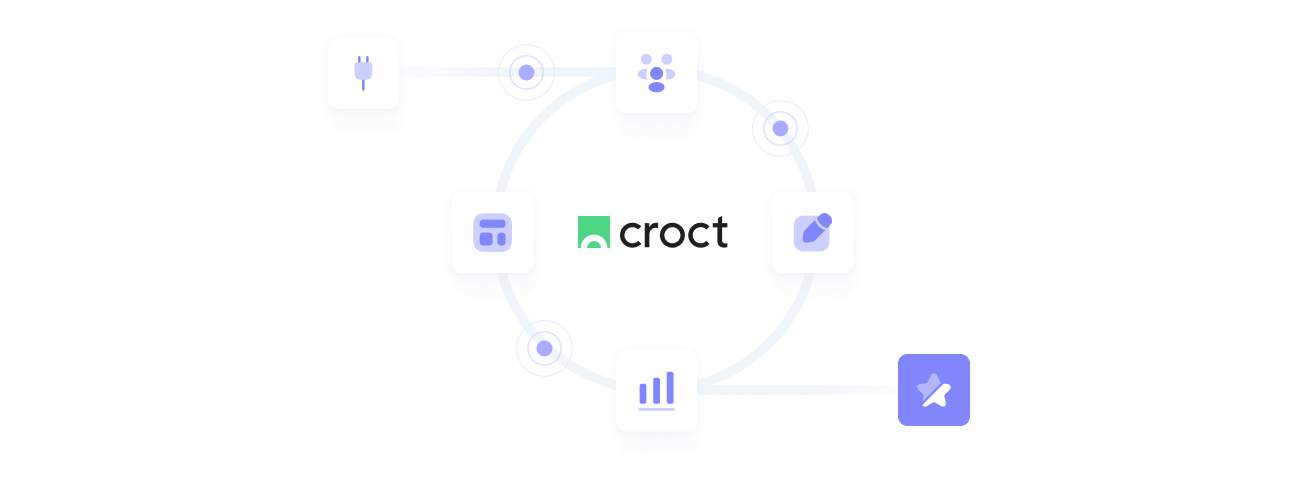Overview
Discover what Croct is and how it works.
In today's fast-paced digital landscape, companies often struggle to create personalized web experiences. Integrating multiple systems to manage content, personalize experiences, and analyze results is complex and time-consuming.

That is where Croct comes in. We provide a unified platform that streamlines the entire process, from content management to analytics and everything in between.
What is Croct?
You can think of Croct as a headless CMS taken to the next level — or, as we like to call it, a Personalization Management System. It is an end-to-end platform that combines the simplicity of content management with the power of personalization and experimentation.
In a nutshell, Croct empowers your team to:
- Seamlessly manage content with a headless CMS.
- Leverage a powerful personalization engine to tailor content for each user.
- Run AB tests to optimize experiences for maximum impact.
- Monitor and analyze results with an integrated analytics platform.
- Create a unified view of your users from first-party data.

Designed with developers in mind, our SDKs seamlessly integrate with modern web stacks, support client and server-side rendering, and much more.
Croct empowers developers to quickly add native personalization capabilities to their products, services, and e-commerce. And all that while reducing time, cost, and complexity compared to traditional methods. This way, teams can focus on what matters most: delivering delightful experiences to their users.
How Croct works?
Here is a quick overview of how to create personalized experiences using Croct:

-
Plug into your stack
Choose the integration that best fits your stack and implement it in minutes. -
Define what you want to personalize
Replace static content blocks with personalized slots, such as banners, top bars, or any other element you want to personalize. -
Select your audience
Use our Contextual Query Language (CQL) to describe your target audience with simple, plain English business rules, like user is returning. -
Define the content
Define multiple content variants for your audience and test them using our built-in experimentation support to find the most effective option. -
Analyze performance
Track your personalization strategy's impact on key metrics like conversion and revenue with real-time analytics, adjusting your approach as needed to optimize results.
Get started
The best way to get started with Croct is to dive right in.
Just create an account and follow the guided setup. You will find everything you need to get started along the way, including documentation and code snippets.